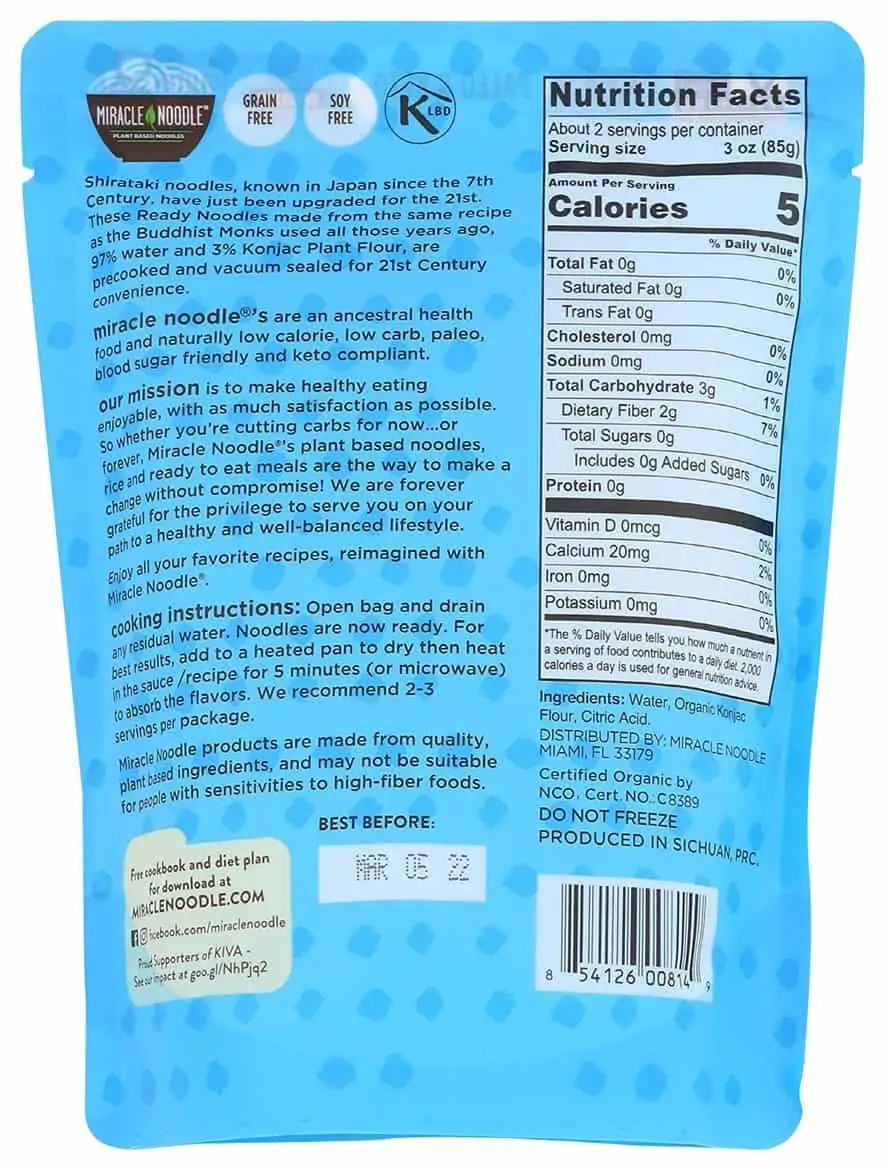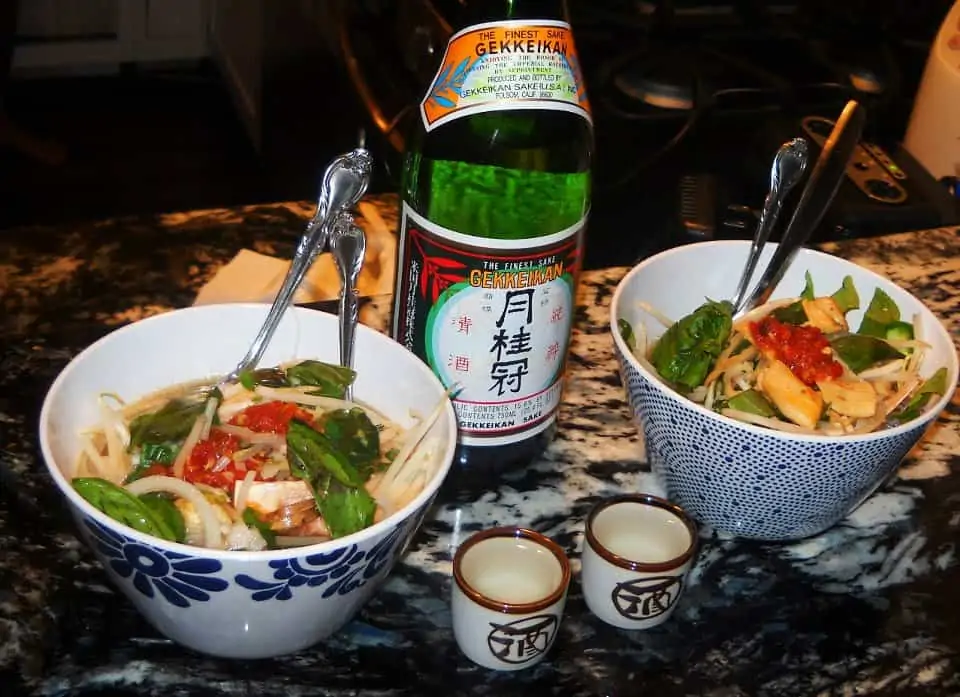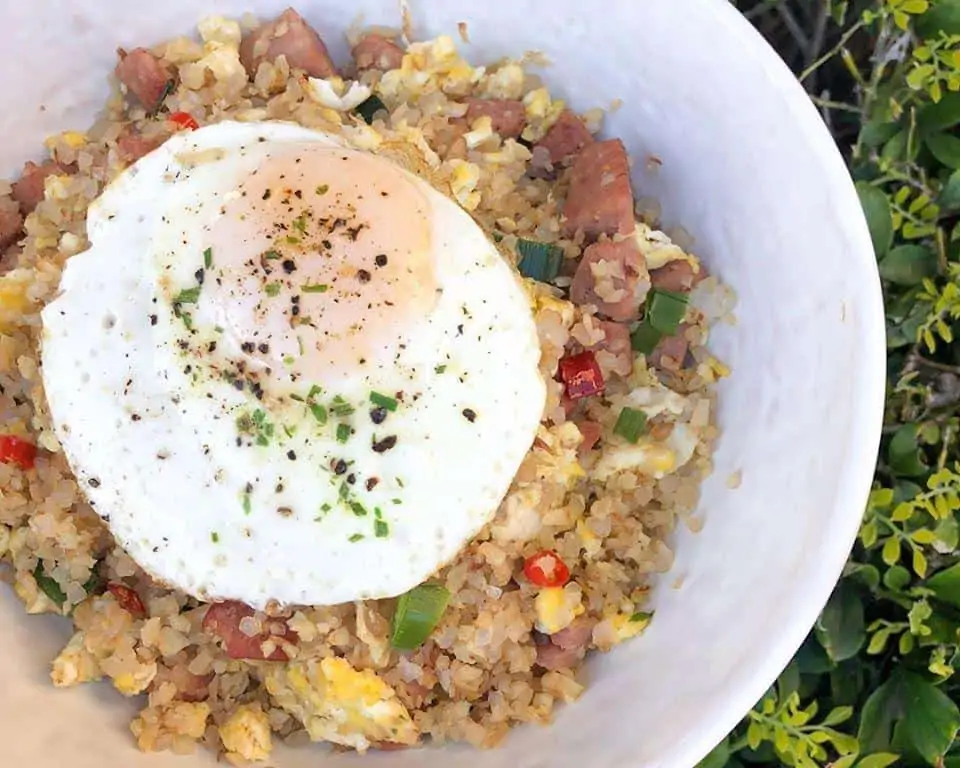Also known as Shirataki Noodles, Miracle Noodles are made from the soluble fibers of the root of a plant called the Konnyaku Imo.
I discovered these while on an ultra low carb diet. I *REALLY* wanted to make some homemade Pho but couldn’t eat the carbs the regular noodle would involve.
I don’t know how or why, but these noodles have the nutritional equivalent of WATER. Just take a look at the nutrition facts (I *just* took a photo of this) –

- 0 Fat
- 0 Cholesterol
- 0 Carb
- 0 Sugar
- 0 Sodium
- 0 CALORIES!!!
The only thing it does have is 8% Iron !! Gluten free, fat free, guilt free noodles – YAAY!!!
What are Miracle Noodles made of?
Made from Shirataki, Miracle Noodles and Miracle Rice have actually around in Japan for over 1,400 years.
Shirataki is made from the Konjac plant. The Miracle Noodle products are basically 97% water and 3% glucomannan (a soluble fiber).
These Shirataki noodles are pretty easy to prepare (rinse, blanche, rinse, dry) and don’t worry about the odd smell out of the package. It goes away after you cook and rinse them :)

They have a new Ready-to-Eat version that is even easier and that I think taste better too. The new packaging states they have 5 calories per serving, but that’s fine by me.
Where do you store Miracle Noodles?
You can store Miracle Noodles and Miracle Rice in the refrigerator but there really is no need since that are both shelf-stable. I prefer to keep them in my pantry because I never seem to have enough space in my fridge.
Whatever you do, DON’T freeze Miracle Noodles. Trust me, just don’t do it.
Anything made with Miracle Noodles can be stored in a sealed container in the refrigerator as you normally would for whichever recipe you use, up to 4-5 days. You can reheat leftovers using a microwave or on the stove.
How to make Vietnamese Pho with Miracle Noodles
I think the consistency is perfect for any asian noodle dish – chow mein, pho, ramen, etc. They absorb the flavors of the food/sauce you cook them with wonderfully.

My favorite way to use Miracle Noodles is what I call “poor man’s Pho”. Heat up your favorite flavor of pre-made bone broth (my favorite is Kettle & Fire Class Beef Bone Broth) and add a package of ready-to-eat Miracle Noodles.
Then add in your favorite classic Pho toppings. I like to use thin sliced beef, tofu, basil, onions, tomato, jalapeno peppers, soy bean sprouts and baby bok choy.
What else can I use Miracle Noodles for?
You can substitute Miracle Noodles for just about any recipe you would use regular noodles. I have even used them in Italian style spaghetti with marinara sauce.
My husband noticed the difference, but said they were good (better than wheat noodles – which he really dislikes). I think they are a little too jelly-like to pass off in regular tomato based sauce, however they are fantastic in a creamy Alfredo or cheese sauce.

Their website is an excellent resource for hundreds of recipes that use Miracle Noodles. These Mac and Cheese Bacon Cups are pretty mouth watering, aren’t they?
Low carb, plant-based Miracle Noodles also come in other shapes/sizes aside from your standard spaghetti type noodle. They also have fettuccine, ziti, angel hair and even rice grain style.

Whenever I’m following a low-carb or Keto diet, one of the things I miss most is Spam Fried Rice. Well, not anymore! This recipe is my goto whenever that craving hits (which is often).
You can find them in local asian markets or I order mine on Amazon. One 7oz package is about enough for one adult serving.